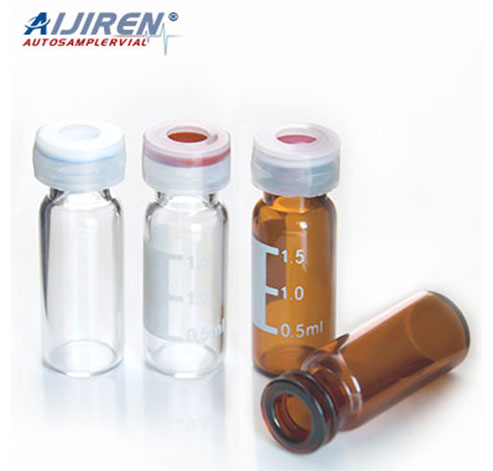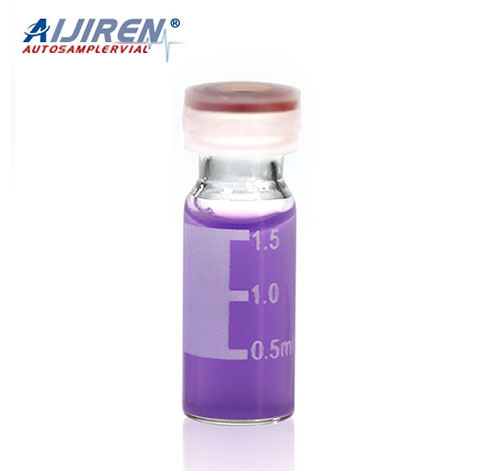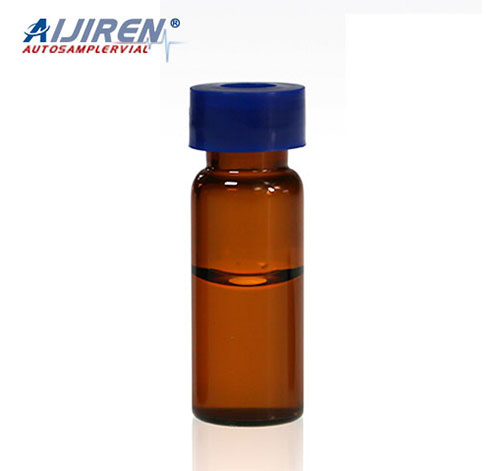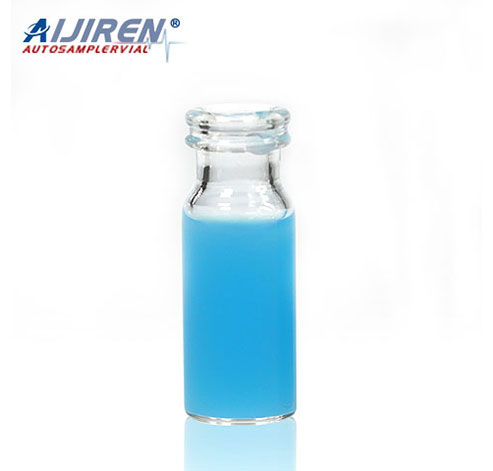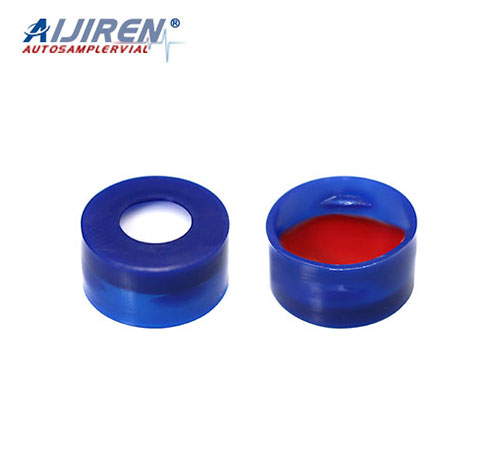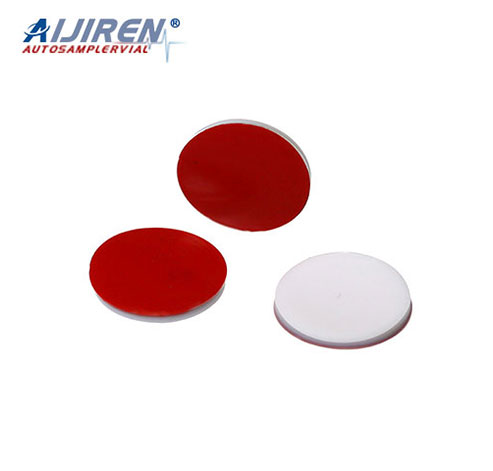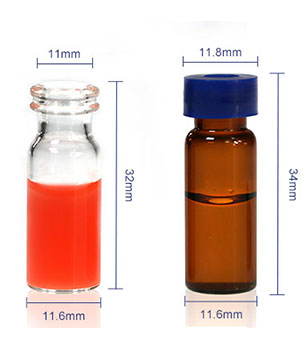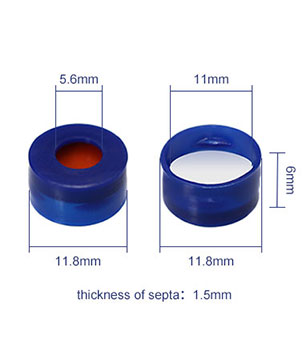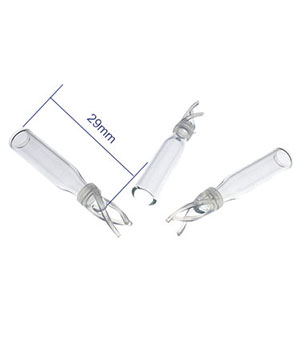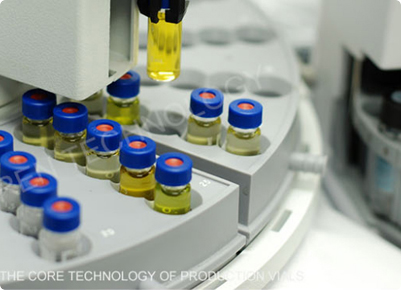Specifications for the 1.5mL 11mm Snap Ring Vial ND11 may vary slightly depending on the manufacturer and specific product line. However, here are some typical specifications you can expect:
1. Volume: 1.5 milliliters (mL)
2. Neck Diameter (ND): 11mm
3. Vial Material Options:
Glass: Borosilicate glass is a common choice for its chemical resistance and inertness.
4. Cap and Closure Type:
Snap Ring Cap: Designed to securely snap into place for a leak-free seal.
Depending on the manufacturer, caps may come with a septum for sample injection or without, depending on the application.
5. Pore Size Options: Pore size may vary depending on the specific filtration needs and can range from 0.2 microns to 0.45 microns or other sizes as required.
6. Compatibility: Designed to be compatible with a wide range of chromatography instruments and autosamplers.
7. Color Options: Vials may be available in both clear and amber colors. Amber vials provide protection against light-sensitive samples.
8. Packaging: Typically supplied in trays, racks, or individual packaging to facilitate ease of use and storage in the laboratory.
How to Choose 1.5mL 11mm HPLC Snap Ring Vial ,11 Points
Finding the appropriate 1.5mL 11mm Snap Ring Vial ND11 for your laboratory or analytical needs requires careful consideration of various factors. Here is a step-by-step guide that can assist with making an informed decision:
Locate Your Application: Determine your specific application of vials. Different applications require various materials, coatings or specifications in their vials - this could include pharmaceutical analysis, environmental testing, food and beverage analyses as well as more general tasks such as storage analysis.
Select an Appropriate Vial Material: (option 1) Choose an ideal vial material according to its compatibility with both samples and analytical methodologies;
Borosilicate glass is chemically inert and suitable for most applications, while polypropylene (PP) vials may be preferable if your sample requires additional protection against its reaction with other substances.
Pore Size: Once applicable, determine the desired pore size of the membrane, such as between 0.21 microns to 0.45 microns or more as necessary. Choose one that will filter out contaminants while still allowing analytes through.
Color: Select either clear or amber vials depending on your needs; clear vials allow clear viewing of samples while amber ones protect light-sensitive compounds from degradation.
Compatibility: Before purchasing or using your chromatography system or autosampler, ensure it is compatible. Consult the manufacturer's recommendations as well as your instrument manual or supplier for advice.
Certification and Quality Control: Your industry or regulatory requirements may require vials that meet specific certifications or quality control standards, such as ISO or other applicable certifications or standards. Please check for compliance.
Packaging: * Identify which packaging format best meets your needs for vials in your laboratory - these could come in trays, racks or individual packages; select one which allows for easier handling and storage in the space where you will store them.
Customizability: Some manufacturers provide customizable vial options that enable you to select materials, colors, and other specifications tailored specifically to meet your unique requirements.
Quantity and Cost: Determine the number of vials needed as well as your budget. While purchasing in bulk may save money, make sure there is sufficient storage space.
Reputation of Vendor or Supplier: Choose a reliable vendor or supplier who has earned their reputation by consistently delivering high-quality products with reliable customer support services.
Consultation: If you need guidance in selecting vials for your laboratory equipment needs, do not hesitate to reach out for expert guidance from either the vial manufacturer's technical support or your laboratory supplier. They can offer invaluable insight based on what best meets your requirements.
Sample Compatibility: Stake Out the Varieties You Will Work With
Before working with any samples, consider what kinds of vial materials or coatings may be required to protect from contamination or sample interaction.
By carefully considering these factors and consulting experts when necessary, you can select the optimal 1.5mL 11mm Snap Ring Vial ND11 to meet the demands of your laboratory and ensure accurate and reliable analytical results.
Compatible Autosampler of 1.5mL 11mm HPLC Snap Ring Vial
The compatibility of the 1.5mL 11mm Snap Ring Vial ND11 with autosamplers can vary depending on the design and specifications of the autosampler. However, these vials are designed to be compatible with a wide range of commonly used autosamplers in chromatography laboratories. Here are some of the autosampler brands and models that are typically compatible with ND11 vials:
Agilent Technologies: Agilent offers a variety of autosamplers, such as the 1260 Infinity II and 1290 Infinity II series, which are compatible with ND11 vials.
Waters Corporation: Waters' ACQUITY UPLC and Alliance HPLC systems often feature autosamplers that can accommodate ND11 vials.
Shimadzu Corporation: Shimadzu's Nexera and Prominence series HPLC systems are designed to work with ND11 vials.
Thermo Fisher Scientific: Thermo Fisher's Dionex UltiMate 3000 and Vanquish UHPLC systems typically support ND11 vials.
PerkinElmer: PerkinElmer's Flexar and Altus HPLC systems may be compatible with ND11 vials.
Bruker: Bruker's Elute UHPLC systems may feature autosamplers suitable for ND11 vials.
Hitachi: Some Hitachi HPLC systems, such as the Chromaster series, may be compatible with ND11 vials.
Agilent and Waters Clones: Many third-party autosamplers that are designed to replicate the functionality of Agilent and Waters autosamplers are also compatible with ND11 vials.
It's essential to consult the specific documentation provided by the autosampler manufacturer or contact their customer support to verify compatibility with ND11 vials. Additionally, some autosamplers may require specific adapters or trays to accommodate these vials, so it's advisable to check for any necessary accessories or modifications.
Discover the solutions to the top 50 commonly asked queries regarding HPLC vials in this comprehensive and enlightening article: 50 Most Frequently Asked Questions on HPLC Vials

 English
English
 Chinese
Chinese
